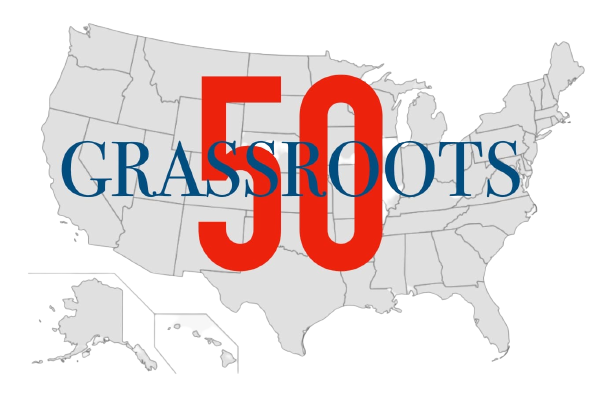The good advice “don't be cruel” should have been heeded long ago.
Elvis Presley released “Don't Be Cruel” in 1956. Pima County and the City of Tucson began to adopt brutal political, economic, industrial, and social policies that put Tucson's metropolis at the forefront of under-prosperity and poverty, and a leader in human misery and epidemics. Made me walk on the road. It comes with poverty.
The city and county also began robbing the area of its natural beauty by allowing the most unsavory developments imaginable, while allowing much of downtown Tucson and the central city to be developed.
The first step to solving a problem is admitting that you have a problem too. The good news is that Pima County admitted it has it.
We announced a 13-point prosperity initiative to boost prosperity and reduce poverty. The effort also references a 2015 New York Times article that concluded that Pima County is “one of the worst counties in the country at helping poor children move up the income ladder.”
Considering there are 2,478 counties, it takes extra effort to be among the worst counties.
As I have discussed in many articles, the Tucson metropolitan area also ranks near the bottom of other socio-economic indicators.
The bad news is The Prosperity Initiative is full of clichés, bromides, and platitudes.
It also smells like redistribution. Euphemistically, this initiative refers to shifting resources to poorer areas. What resources? Despite high sales tax rates and high property taxes, both cities and counties have low tax bases due to a lack of high-paying industries and an influx of retirees on fixed incomes. A low-income service worker from another state, a snowbird with no ties to the community, a student who attends the University of Arizona and moves on to greener pastures after graduation, and after spending their first summer in the desert. , migrants wandering around in search of warmer weather.
There is also an influx of unskilled and poorly educated immigrants from south of the border, and cities and counties are encouraging them to migrate. That's a fact, not a xenophobic sentiment.
It's true that both my immigrant grandparents and my wife's immigrant grandparents had low skills and low education. But at the time, it was easy to survive with blue-collar jobs, even though government social safety nets were virtually non-existent, and even in single-parent households, only one parent worked to survive. was easy.
As evidenced in Tucson, when the economy and housing grow slower than the population, population growth is negative.
In any case, when the county talks about transferring resources, where are they transferring resources from? Even relatively affluent areas of large cities are wealthy in Tucson but not as wealthy as other cities.There are crumbling roads, poor landscaping, spotty code enforcement, mediocre schools, inadequate transportation networks, and poor public facilities and services. If upkeep and abatement of these areas is further postponed, the movers and shakers who are deciding where to locate not only their high-paying businesses but also their own families, bringing capital and a higher tax base to the city. For many, the appeal of big cities will only continue to diminish. .
You may not like the so-called elites, but that's the reality.
Local governments have already shifted significant resources to: downtown redevelopment, It's becoming a hub for government agencies, companies that prey on the government, apartment-dwelling professionals, and low-wage bars and restaurants.about When redevelopment began several years ago, $200 million was wasted. Median household income in the city is approximately $50,000 (though higher in metropolitan areas), which equates to the annual income of 4,000 households. But the county wants us to believe it knows how to reduce poverty.
Rather than taking lessons from American cities that are more successful than Tucson, the Prosperity Initiative takes lessons from nation-states. Using a Canadian-developed formula for the economic cost of poverty, the initiative claims that Pima County suffers an annual economic loss of $2.8 billion due to poverty. What this means is that even if the county were to spend that much on poverty reduction, it would be a cheap investment because the costs would be quickly recouped.
Of course, Canada is very different from Tucson, especially demographically. Although Canada does not track race and ethnicity like the United States, it is estimated that blacks and Latinos make up just 3.8% and 2.5% of Canada's population, respectively. For Tucson, those numbers are 4.8% and 44.8%.
Asians make up 19.3% of Canada's population, compared to 3.2% in Tucson, largely due to Canada's skills-based immigration system. Vancouver has an even higher proportion of Asians, with Chinese, South Asians, and Filipinos making up 39.3% of the population. So many wealthy Asians have bought property in Vancouver that many mainland-born Canadians say they can no longer afford to live in Vancouver.
These are important statistics. In general, the higher the combined proportion of Asian and Nordic people in a city, the higher their income and wealth.This applies to both Canada and the US
I have traveled to Canadian cities for work and play: Winnipeg, Calgary, Ottawa, and Quebec. There was a significant lack of Black and Latino diversity in these cities. (French Canadians consider themselves a minority, but they don't consider themselves a minority.) Canada, on the other hand, is rich in natural resources.
It is said that demographics are destiny. That certainly seems to be true when comparing Tucson and Canada. But there are several U.S. cities of Tucson's size and similar demographics that have escaped the poverty trap. Pima County and the City of Tucson should look to them for ideas, not Canada. There's nothing wrong with listening to Elvis.
I take action
As we move through 2023 and into the next election cycle, The Prickly Pear is back with Take Action recommendations and information.

















